**These Scary Prehistoric Animals Once Lived Alongside Humans**
While we often think of dinosaurs as the ultimate prehistoric creatures, it’s fascinating to remember that many other ancient animals roamed the Earth alongside early humans. Picture yourself sharing a world with some of the most formidable beasts ever to grace our planet. It’s a little terrifying and a lot intriguing. Ready to dive into the past? Here’s a list of some jaw-dropping prehistoric animals that coexisted with our ancestors.
1. The Woolly Mammoth
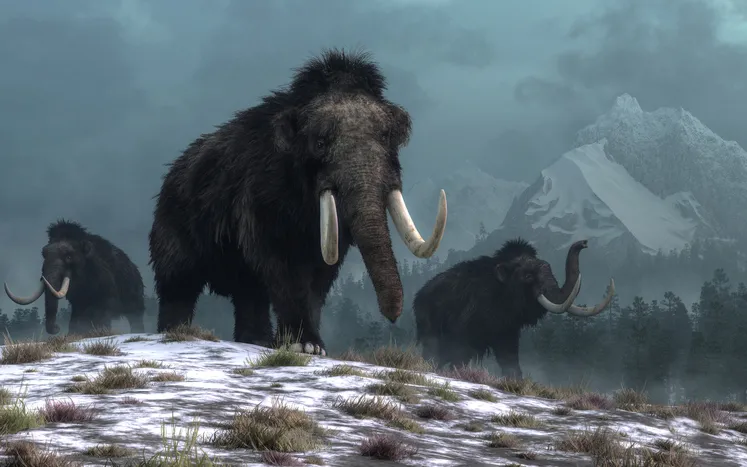
Imagine massive elephants covered in shaggy fur, plodding through icy landscapes. Woolly mammoths were iconic Ice Age giants, standing shoulder to shoulder with early humans. These creatures, with their spiraled tusks and immense size, were not only a sight to behold but also a crucial part of the ecosystem. Humans hunted them for food, clothing, and shelter, leaving behind cave paintings as evidence of their encounters. The mammoth’s existence is a reminder of Earth’s colder chapters and the adaptability of life through harsh climates.
2. The Saber-Toothed Tiger
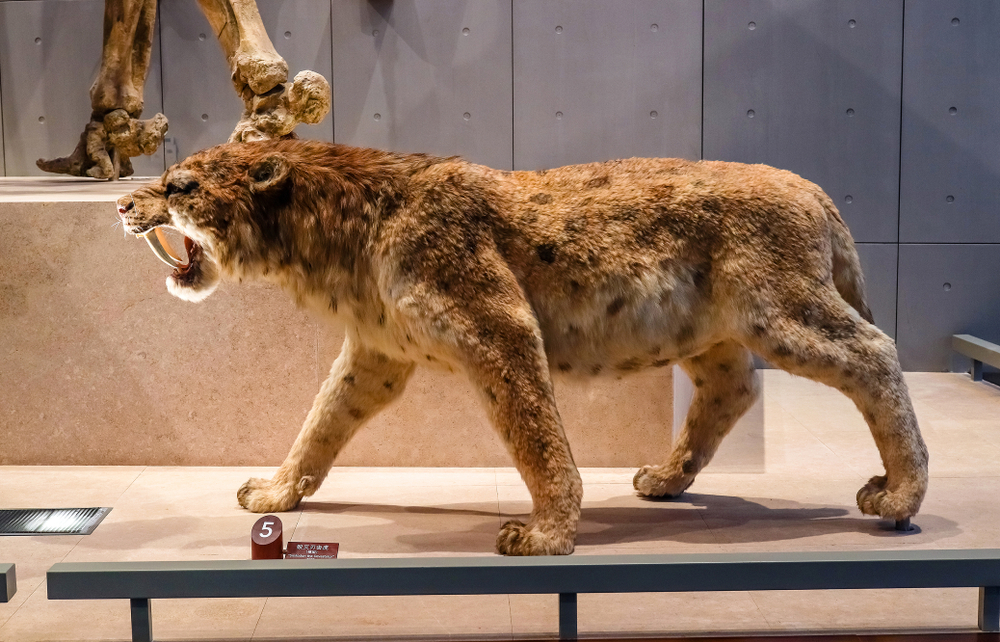
No, these aren’t just the stuff of nightmares—they were real, and they prowled the same terrains as our distant relatives. Saber-toothed tigers, or Smilodons, were known for their elongated canines, which they used to take down prey with a powerful bite. These predators were fearsome hunters, and their presence surely added an element of danger to the daily lives of early humans. Their fossils tell a story of a world where survival often meant staying one step ahead.
3. The Giant Ground Sloth
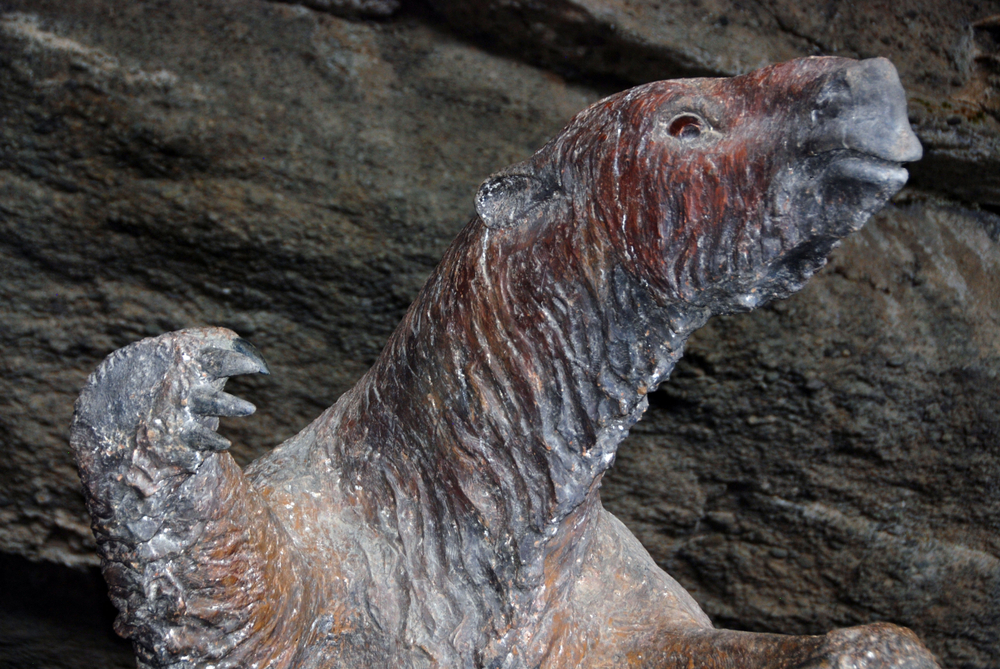
Forget the image of a slow-moving, tree-dwelling sloth. These giants, towering up to twenty feet tall, were a far cry from their modern relatives. Roaming the Americas, they were surprisingly agile for their size and left footprints in the mud that can still be found today. Humans likely encountered these gentle herbivores and might have even hunted them for sustenance. The giant ground sloth stands as a testament to the diversity of prehistoric life and the adaptability of species through changing times.
4. The Dire Wolf
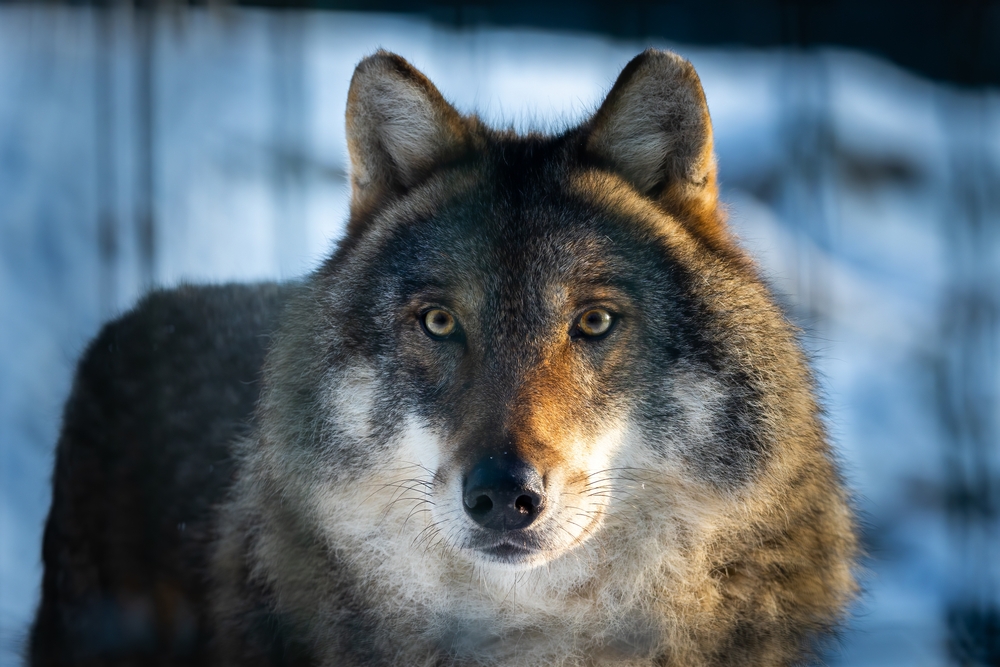
Step aside, Game of Thrones fans. Dire wolves were the real deal, albeit without the fantasy elements. Larger and more robust than modern wolves, they hunted in packs and dominated the terrain with their keen senses and formidable strength. Sharing territory with early human settlers, they were both competitors and inspirations, possibly even mingling in the mythologies of ancient peoples. The dire wolf’s legacy endures in folklore and as a symbol of the fierce, untamed wilderness.
5. The Megalania
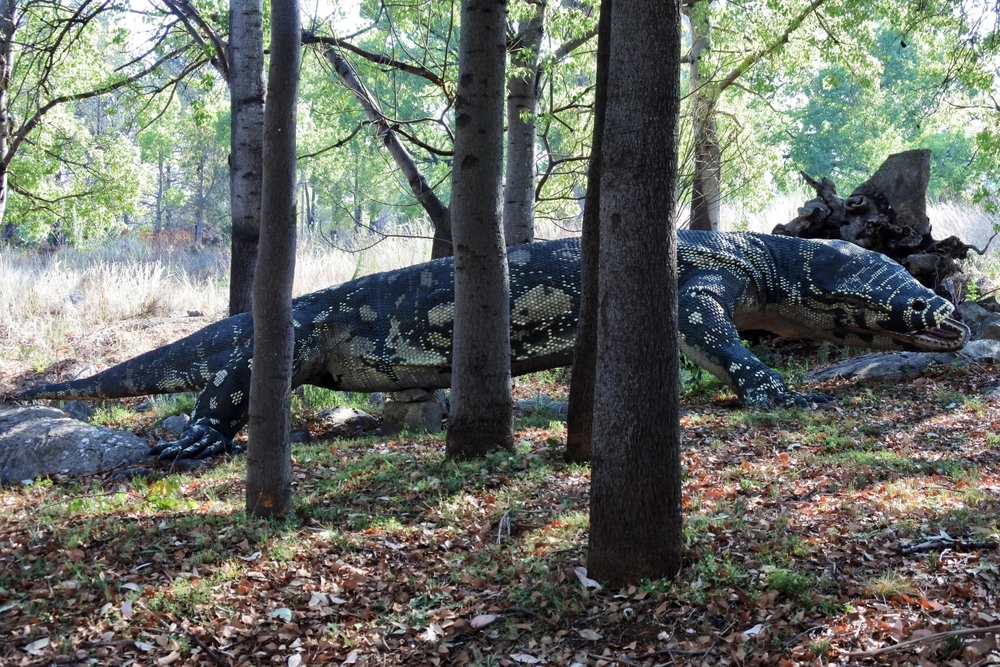
Dinosaurs may have exited the stage, but the Megalania took center spotlight as a formidable reptilian predator in Australia. Essentially a gigantic monitor lizard, this beast was at the top of its food chain, with some estimates suggesting it exceeded twenty feet in length. Early humans cohabitating the land had to navigate the dangers posed by this enormous carnivore, a true apex predator of its time. Fossils of the Megalania offer a glimpse into a prehistoric Australia teeming with life, both dangerous and awe-inspiring.
6. The Woolly Rhinoceros
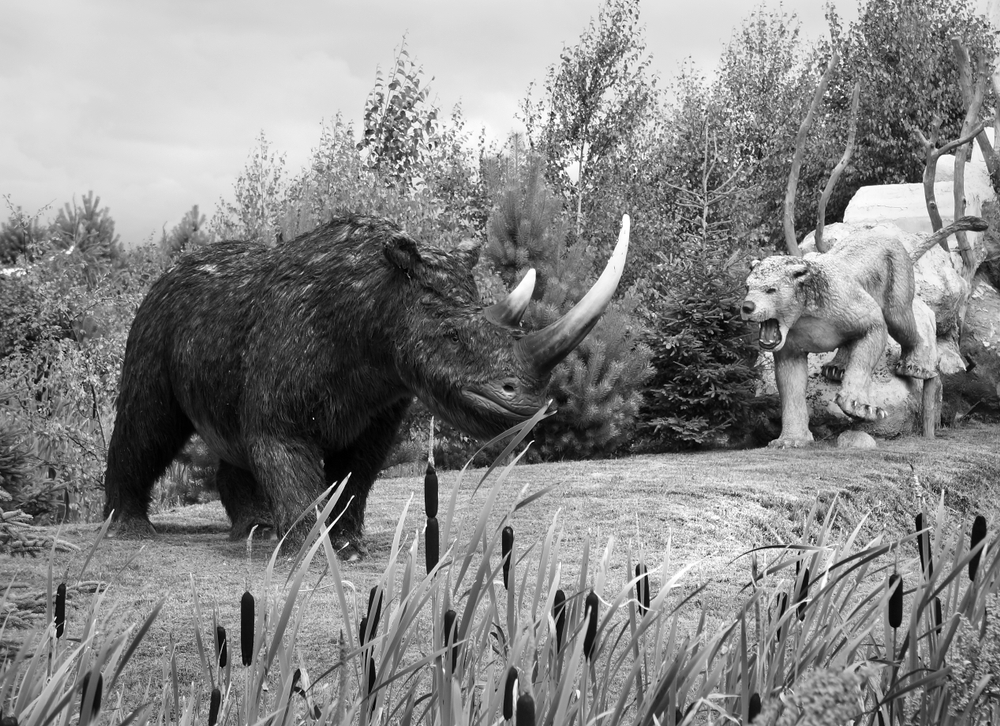
Sporting a thick coat of hair and a hefty build, the woolly rhinoceros roamed the icy plains of Europe and Asia. These impressive creatures were well adapted to the cold, with their thick fur and fat reserves. Sharing the landscape with early humans, they no doubt inspired awe with their imposing horns. Cave art reveals that humans not only encountered these beasts but revered them enough to capture their likeness. The woolly rhino’s story paints a vivid picture of survival in a frozen world.
7. The European Cave Lion
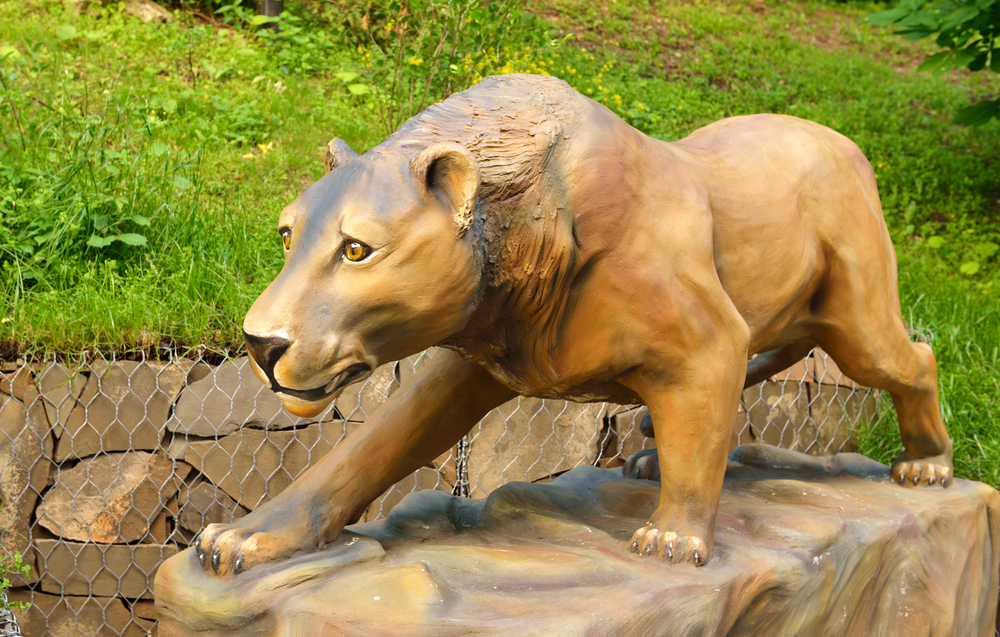
Imagine a lion but larger and possibly even more powerful, prowling the forests and steppes of prehistoric Europe. The European cave lion was a formidable predator that hunted large herbivores and potentially competed with early humans for prey. Evidence of their majesty is etched into cave walls, a testament to their impact on the human psyche. These big cats weren’t just rivals but also symbols of strength and prowess, shaping the narratives of the communities that shared their lands.
8. The American Mastodon
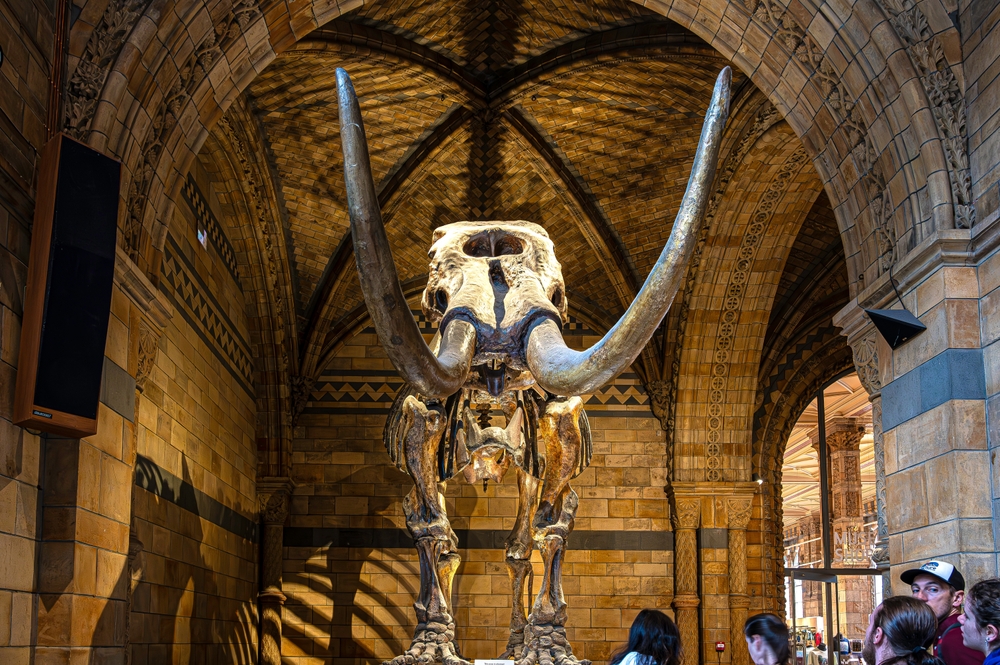
Roaming the forests of North America, mastodons were similar to mammoths but with distinct differences in size and tooth structure. These herbivorous giants grazed alongside prehistoric humans, providing a bountiful resource for those capable of taking one down. Mastodon fossils, complete with spear points, tell tales of ancient hunts and survival strategies. They offer a glimpse into a time when humans were learning to thrive in diverse environments, adapting to the presence of these magnificent creatures.
9. The Giant Beaver
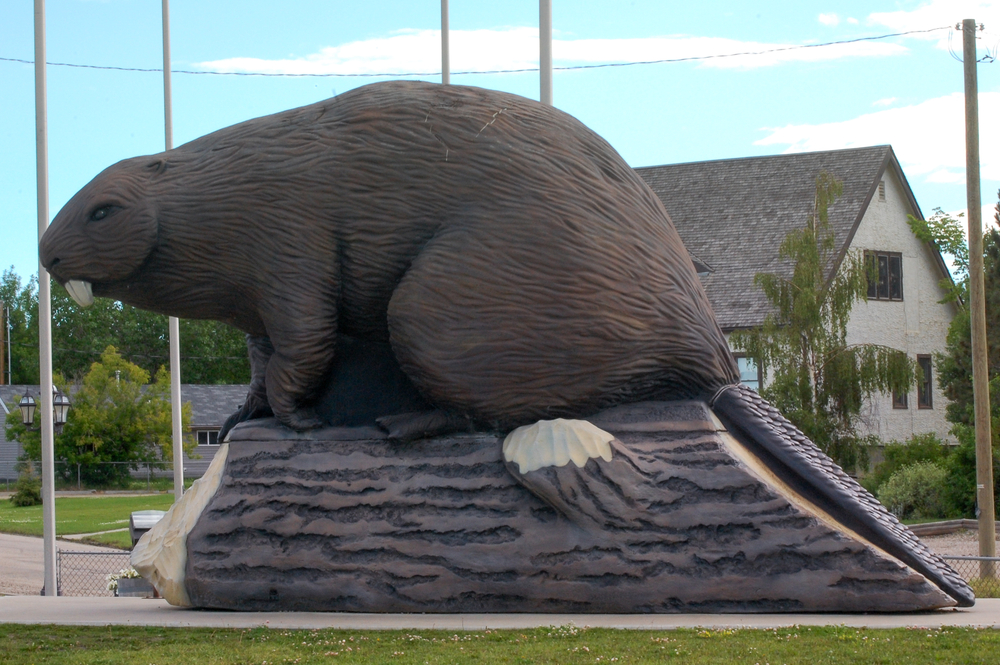
Think of a beaver but on a scale that defies imagination. The giant beaver, once inhabiting North America, measured up to eight feet in length. While less fearsome than some of their contemporaries, these semi-aquatic rodents played an important role in shaping the prehistoric landscapes, crafting waterways long before human engineers. Their presence alongside humans is a reminder of the varied ecosystems in which our ancestors lived and the myriad species that formed their intricate web of life.
10. The Short-Faced Bear
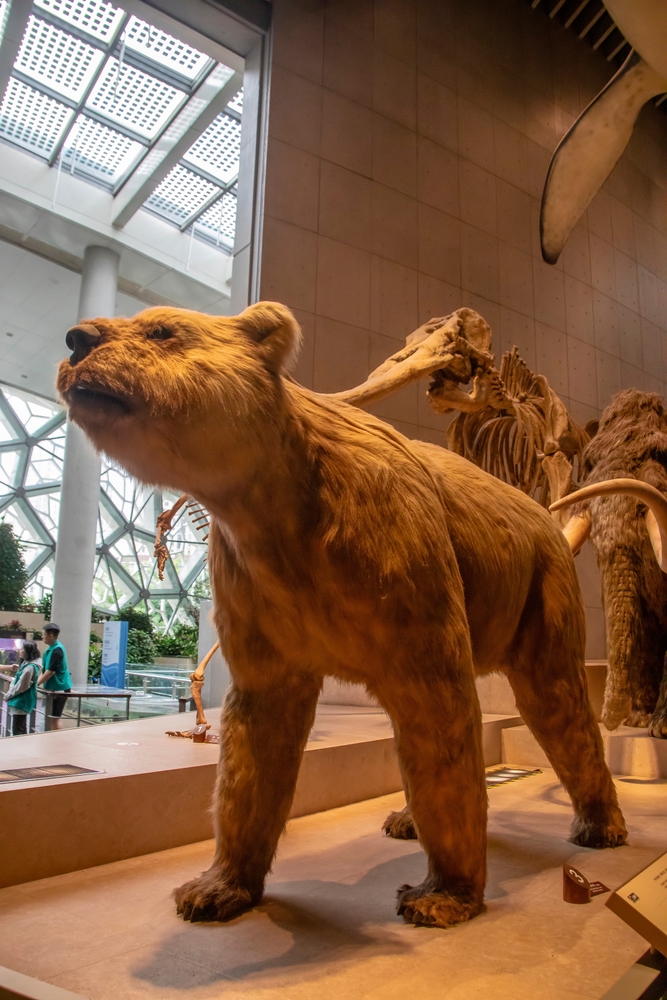
Standing over twelve feet tall when on its hind legs, the short-faced bear was one of the largest terrestrial carnivores. Roaming from North America to South America, this formidable mammal was known for its speed and power. Early humans would have had to be constantly vigilant of such a predator, which could easily overpower them. Though extinct, the short-faced bear remains a symbol of the fierce competition that shaped the evolutionary paths of species that shared its domain.
11. The Moa
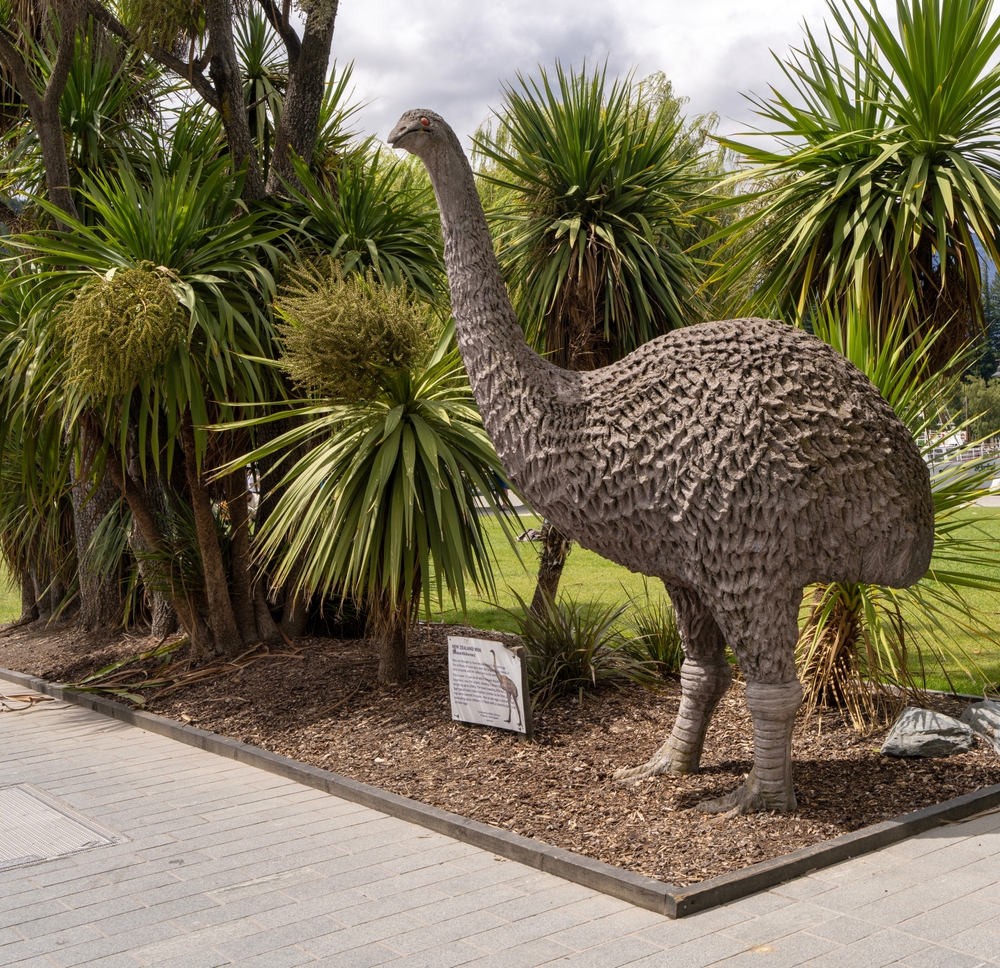
Long before humans set foot in New Zealand, the Moa, a flightless bird, ruled the land. However, once humans arrived, these birds faced an unprecedented threat. Standing up to twelve feet tall, Moas were easy targets for hungry settlers, leading to their rapid extinction. Their demise offers a poignant reflection on the impact humans have had on ecosystems and the delicate balance between survival and conservation.
12. The Megatherium
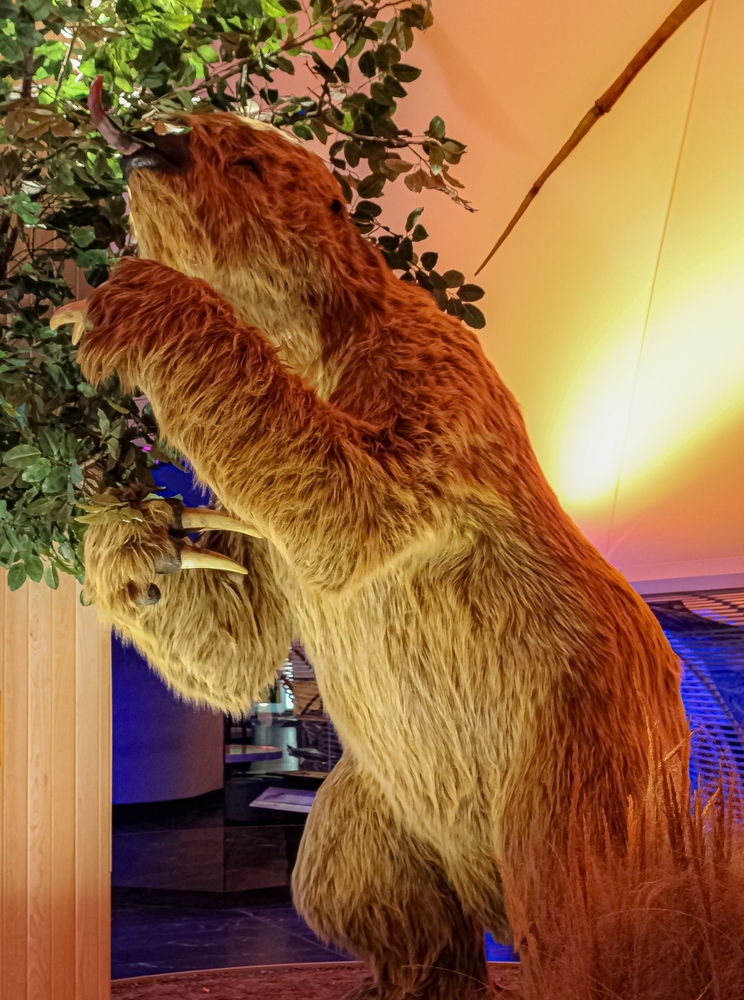
The Megatherium was a ground sloth of gargantuan proportions, thriving in South America. Despite their size, these herbivores were known for their gentle nature. However, their impressive stature and slow pace likely made them vulnerable to human hunters. Archaeological evidence suggests that early humans might have interacted with these gentle giants, perhaps even hunting them for food. The Megatherium’s story is a window into a world where size alone wasn’t enough to guarantee survival.
13. The Glyptodon
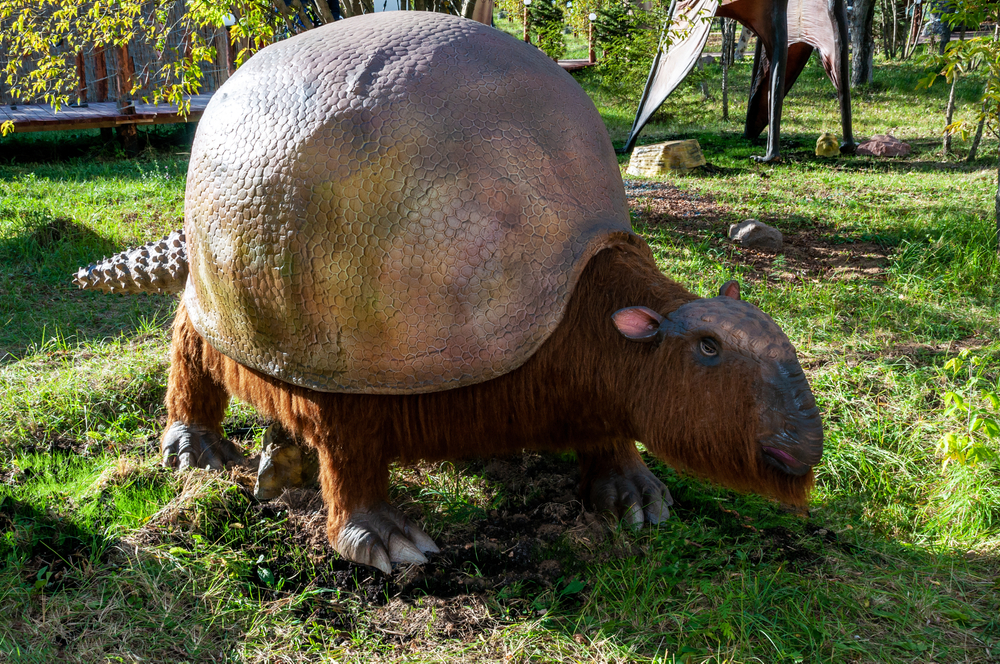
Picture an armadillo but on a behemoth scale, and you’ve got the Glyptodon. Roaming South America, these armored beasts were the size of a small car. While they were herbivores, their sheer size and protective shells made them a formidable sight. Humans likely encountered Glyptodons, possibly even using their shells for shelter. Their presence serves as a reminder of nature’s creativity and the diverse forms life has taken throughout history.
14. The Megaloceros
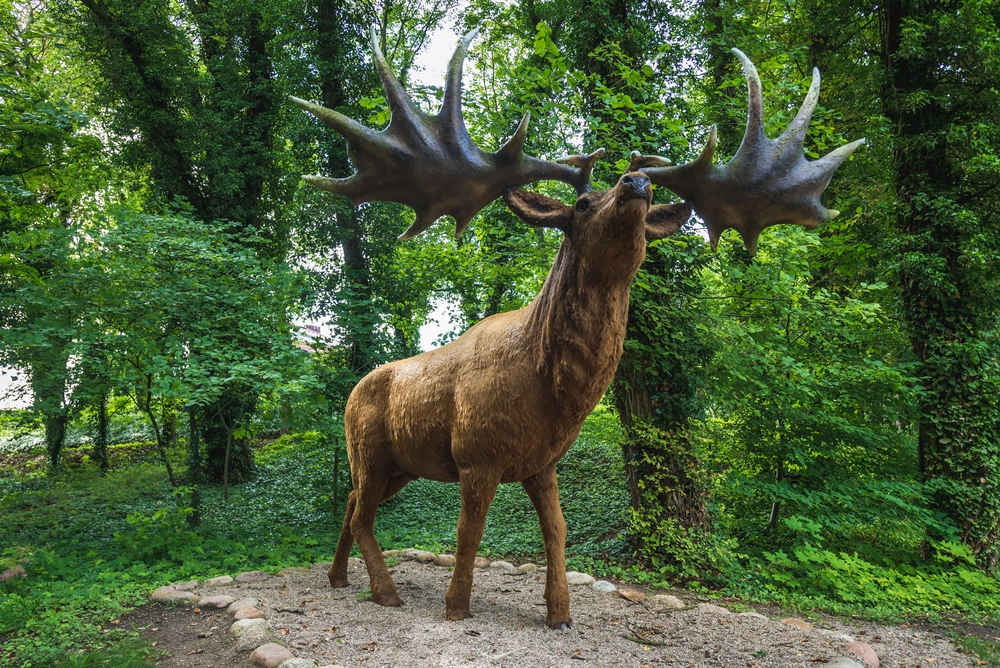
The Megaloceros, or Irish elk, was one of the largest deer to ever exist, with antlers spanning up to twelve feet. These majestic creatures inhabited Europe and Asia, their impressive antlers making them a favorite subject of ancient human art. They roamed vast landscapes, competing for resources and attracting the attention of early hunters. The Megaloceros stands as an icon of prehistoric grandeur, its fossilized remains a testament to the beauty and diversity of Earth’s ancient past.
